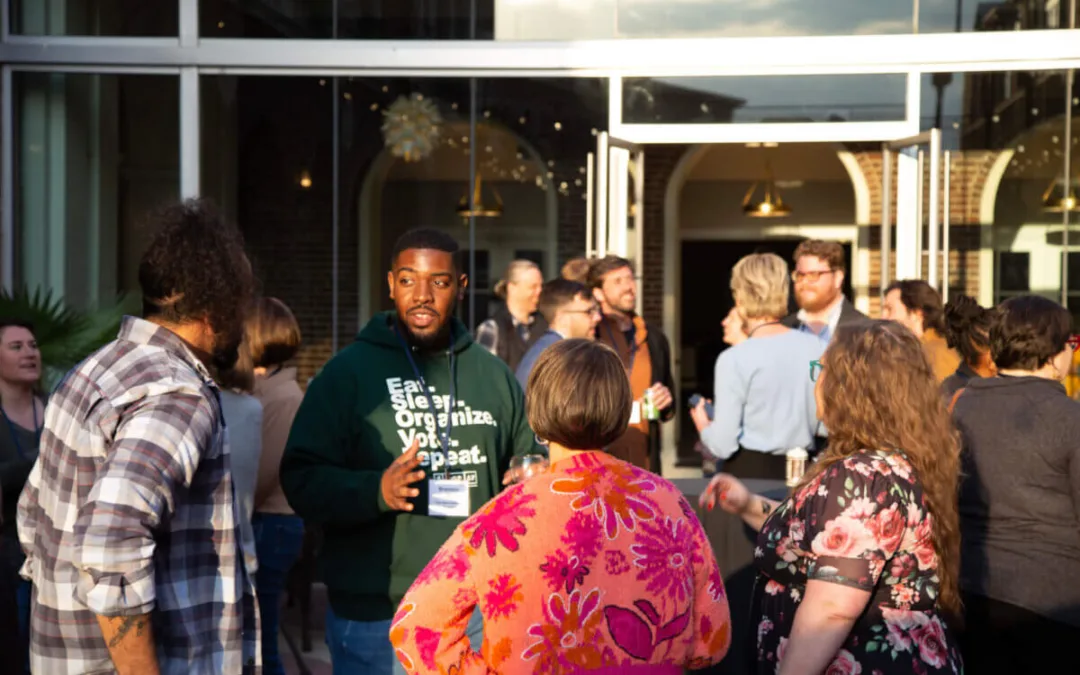
Image via AP Photo/Hans-Maximo Muselik
From Mexico to the U.S. and back. Thanks to gentrification moving back to the country of origin is having a moment.
Andrés Santos had been selling elotes and esquites (Mexican corn on the cob and husked corn) in a corner of Highland Park in Los Angeles for 23 years. That he decided to go back to Mexico to marry his high school sweetheart is only a romantic twist in a saga, reported by the Los Angeles Times, that reveals the economic symbiosis between the two countries.
For Andrés is not your run of the mill street vendor. He is a college graduate from a middle-class Mexican family who moved to the United States in 1997 when his family’s mini-market was hit hard by an economic crisis.
In Mexico, the idea that a middle-class college graduate can end up selling corn on the street is the nightmare of any “respectable” family. Class divisions are entrenched and upward mobility happens at a glacial pace, which is why so many Mexicans leave for the United States. While a corn seller in Mexico will struggle to rise above the poverty level or, if they do extremely well, scratch the bottom of the middle class, in the U.S., working equally hard, they can have a humble but higher standard of living. U.S. economics is different from Mexico’s, where produce and labor are abundant and cheap.
RELATED: Trump’s Border Shutdown Is A Reality— And A Nightmare
On average, a street elote or esquite in Los Angeles goes for about two or three dollars, whereas in Mexico City it will set you back a dollar or less. Andrés was paying $850 a month for his apartment in L.A., and even in hard times, he was selling about $180 worth of corn a day. This would be a fortune for a corn seller in Mexico City, where according to the El Universal newspaper, an informal economy worker can earn up to $640 a month selling snacks from a street stall and the average minimum wage is about $6.50 a day.
Andrés’ father had moved to the U.S. in the 1980s to sell corn and shaved ices. At the time, Andrés could not understand this. But years later, when he moved to the predominantly Mexican and Latino neighborhood of Highland Park, Andrés saw the opportunity. He worked hard selling wonderful elotes and thrived for over twenty years.
Then, in an unfortunate yet predictable twist, and like so many other working-class neighborhoods in American cities, Highland Park was transformed by gentrification. Rents started rising, Latinx businesses started closing and there was an influx of hipsters who are probably willing to pay seven dollars for the gentrified version of Mexican corn inside a restaurant, but who don’t necessarily appreciate the glories of eating street food.
As the original residents were forced to move out, the neighborhood changed. A business owner resented Andrés’ little cart and had him arrested. He even spent two nights in jail.
RELATED: Less Than 16% Of Latinos Can Actually Work From Home
After struggling to keep the business afloat, Andrés finally decided to call it quits. With what he was able to build during 23 years of hard work in the U.S., Andrés can now go back to Mexico to marry his college sweetheart, whom he left for a new life in America.
In this, he is not alone. The Pew Research Center reports that Mexicans are still the largest group of undocumented immigrants in the U.S. but that between 2007 and 2017, this group decreased by 2 million people.
The Mexican Institute of Statistics estimates that there are about 800,000 US-born people currently living in Mexico, four times as many as in 1990. Among them are American artists, professionals, and retirees attracted by the weak peso and the affordable cost of living, but most are former undocumented immigrants who are returning to reunite with their families.
In turn, they are bringing a new culture to Mexico. According to The Washington Post, this reverse immigration trend has impacted life in Mexico, as American immigrants help to boost the local Mexican economies and transform neighborhoods and schools. “It’s beginning to become a very important cultural phenomenon, like the Mexican community in the United States,” the Mexican foreign minister, Marcelo Ebrard, told The Post.
Now that the coronavirus has upended the world’s economy it will be interesting to track the new cycles of gentrification. Will they stop, slow, reverse, or, as in the case of Andrés, come full circle?
RELATED: Will Coronavirus Change Us?
Politics

Teamsters and UPS Reach Tentative Deal to Avoid Strike, 340,000 Workers to Get Raises
The tentative deal represents a huge win for full- and part-time UPS Teamster workers, who would get significant pay raises and better working...



One Republican Senator Is Blocking 265 Military Promotions, Leaving the Marines Without a Confirmed Leader
Sen. Tommy Tuberville's decision means these military officers are not getting the pay raises they’re owed, cannot move their families to wherever...
Local News



Teamsters and UPS Reach Tentative Deal to Avoid Strike, 340,000 Workers to Get Raises
The tentative deal represents a huge win for full- and part-time UPS Teamster workers, who would get significant pay raises and better working...



One Republican Senator Is Blocking 265 Military Promotions, Leaving the Marines Without a Confirmed Leader
Sen. Tommy Tuberville's decision means these military officers are not getting the pay raises they’re owed, cannot move their families to wherever...




